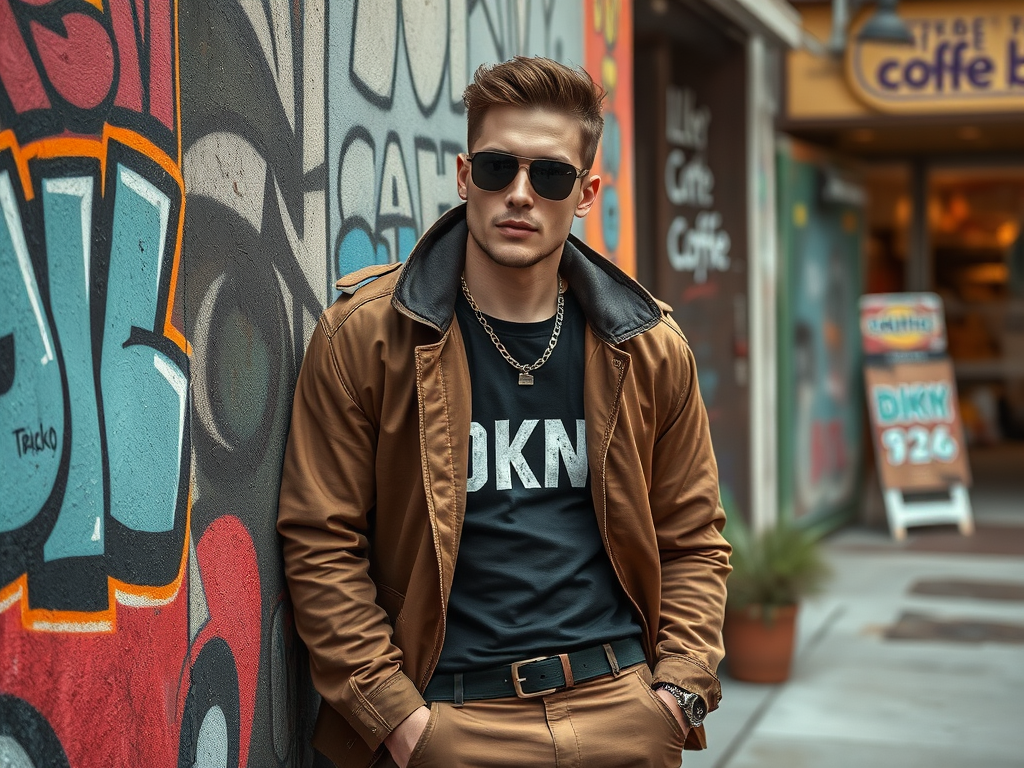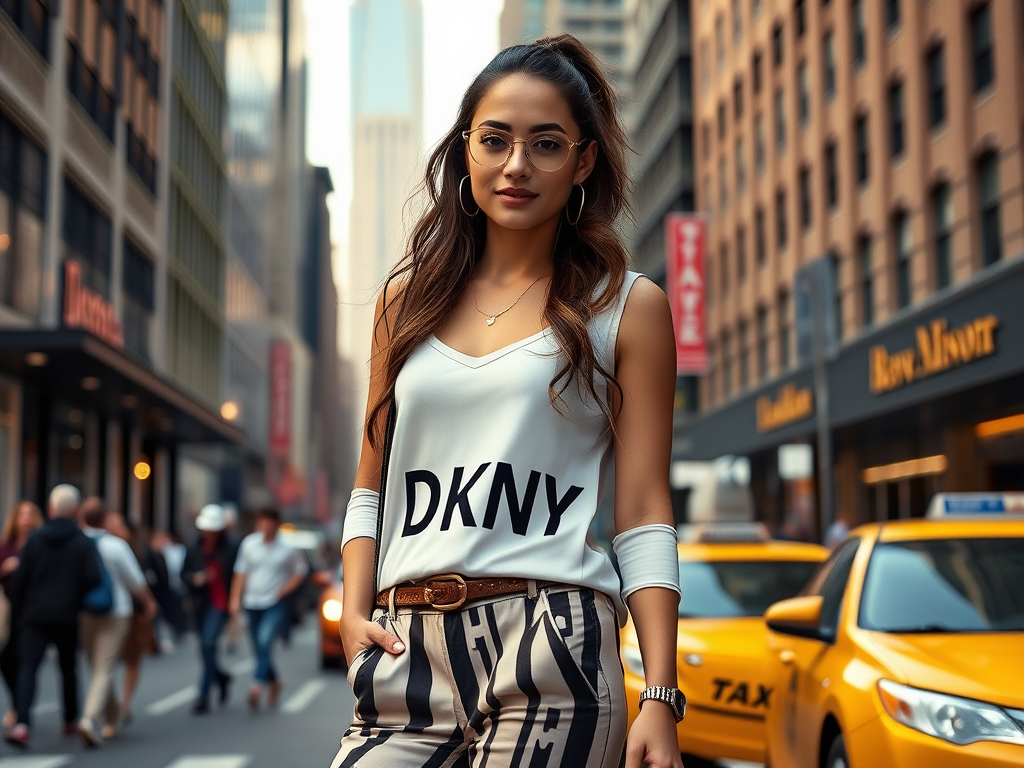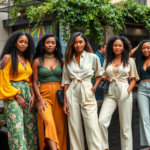DKNY, a brand that originally encapsulated the dynamism and creativity of New York City, has faced trials and triumphs as it navigated the ever-shifting maze of the fashion industry. Founded by the innovative designer Donna Karan in 1984, the label quickly captured the attention of those who sought both style and function in their urban wardrobes. Today, consumers are more discerning than ever, and the question arises—can DKNY still claim its throne as a purveyor of urban chic amidst the competition? As we sift through the recent collections, brand evolution, and market positioning, we will uncover the essence of DKNY in a modern context. Our goal is to determine if the brand remains relevant and appealing to today’s fashion enthusiasts and lifestyle seekers who embrace urban elegance. The conversation around DKNY is not just about clothing, but about identity and lifestyle. It’s about understanding the brand’s historical roots while honoring the present trends that shape contemporary urban fashion.
The Evolution of DKNY

Since the inception of DKNY, the brand has undergone numerous transformations, continuously striving to adapt to changing fashion landscapes. The early years were marked by designs that echoed the vibrancy and diversity of New York City, establishing a strong relevance in the minds of consumers. The sets radiated an essence that was accessible yet aspirational, appealing to young professionals who found a reflection of their fast-paced lives in DKNY’s offerings. Each new collection sought to weave together the distinct threads of urban life, marking key milestones that solidified the brand’s position. Among these milestones, the launch of the iconic ‘DKNY’ logo stands out, embodying the spirit of the city it represents. As the brand grew, it ventured into international markets, reaching consumers far beyond the confines of the United States. Collaborations with various designers and celebrities further enhanced its visibility, but is that enough to keep DKNY relevant today?
- 1984: DKNY is founded by Donna Karan.
- 1992: The brand launches its first flagship store in New York City.
- 1997: DKNY enters the international market.
- 2007: Collaborations begin with notable artists and celebrities.
- 2017: A renewed marketing strategy targets a younger audience.
Current Brand Positioning

Determining DKNY’s relevance today requires a close examination of its brand positioning in the market. The identity of the brand has adapted to target a more diverse audience, which includes both men and younger fashionistas. In doing so, DKNY appears to embrace a universal appeal while retaining its core values rooted in urban lifestyle. The company’s pricing strategy reflects a balance between luxury and accessibility, but this raises an essential question regarding how it stacks up against its competitors. To understand why consumers still gravitate toward DKNY, we need to delineate its current practices in contrast to rival brands in the urban chic sector. In the following sections, we will analyze these aspects in further detail.
Target Audience
Initially, DKNY catered primarily to young, cosmopolitan women seeking a sophisticated wardrobe. However, recent marketing strategies indicate a deliberate shift to include:
- Men looking for stylish urban wear
- Younger audiences exploring trendy options
- Fashion-conscious individuals who value versatility
Pricing Strategy
DKNY has succeeded in maintaining mid-range luxury pricing, but how does it align with consumer expectations today? Its pricing reflects a quality-focused approach while also ensuring affordability. Let’s take a look at how DKNY compares to its urban chic competitors:
| Brand | Average Price Range | Target Audience |
|---|---|---|
| DKNY | $75 – $300 | Young professionals, men, and younger demographics |
| Marc Jacobs | $100 – $450 | Younger, trend-focused individuals |
| AllSaints | $80 – $400 | Fashion-forward, edgy demographics |
DKNY’s Recent Collections: A Reflection of Urban Chic?
A closer look at DKNY’s latest collections will illuminate whether the brand still embodies the urban chic aesthetic. The design elements in these collections indicate a desire to blend practicality with modern styles, catering to the needs of today’s urban dweller. From fabrics to silhouettes, we can evaluate how DKNY aligns with contemporary trends while maintaining its classic charm.
Design Elements
Recent collections feature notable design choices, such as:
- Oversized silhouettes that offer comfort without sacrificing style
- Bold colors and patterns that resonate with youthful energy
- Functional yet fashionable pieces that cater to busy urban lifestyles
Popularity and Reception
The popularity and reception of DKNY’s collections can provide further insights into its current standing. Customer feedback often reveals trends in:- Quality of materials used- Satisfaction with fit and style- Overall value for money
Competitors in the Urban Chic Space
As the fashion industry invites new trends and brands, competition is fiercer than ever. Evaluating DKNY’s standing alongside noteworthy competitors will highlight its unique offerings and potential areas for growth. Here are some leading contenders that continue to make waves in the urban chic landscape:
- Marc Jacobs: Known for playful designs that appeal to a younger audience.
- AllSaints: Offers premium, edgier pieces that set them apart.
- COS: Minimalistic designs focusing on modern essentials.
Conclusion
As we journey through the landscape of urban chic fashion, it becomes clear that DKNY has evolved, yet its core identity remains tightly woven into the fabric of the genre. The brand still resonates with those seeking practicality without skimping on style. While its relevancy is being tested by evolving consumer expectations and increased competition, DKNY has the potential to continue thriving. Consistent innovation, coupled with a nod to its rich heritage, will be critical. By striking a balance between modern trends and urban roots, DKNY can reaffirm its place as a leader in fashion for urban chic enthusiasts.
Frequently Asked Questions
- Is DKNY still popular among fashion-conscious consumers? Yes, DKNY continues to attract a loyal customer base, though its popularity has fluctuated.
- What are the current trends in DKNY’s collections? Recent collections emphasize urban practicality with a mix of modern aesthetics, including oversized silhouettes and bold colors.
- How does DKNY compare in price to other urban chic brands? DKNY sits in the mid-range luxury category, generally more affordable than high-end brands but slightly pricier than fast fashion.
- Has DKNY maintained its urban identity over the years? While DKNY has expanded its audience, it still strives to embody the spirit of urban life through its designs.





